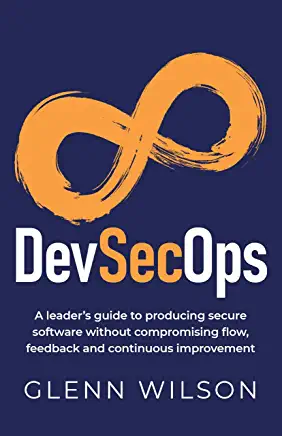
Discover the power of ChatGPT API with this comprehensive use. Learn about its key features, example usage, and tips for harnessing its power to create engaging conversational experiences in your applications.
The ChatGPT API is an innovative tool developed by OpenAI, which allows developers to integrate the powerful ChatGPT model into their applications, products, or services. This article delves into the fundamentals of the ChatGPT API, along with examples and tips to help you harness its full potential.
Understanding ChatGPT API
What is ChatGPT API?
The ChatGPT API is an interface that enables developers to utilize the capabilities of the ChatGPT model in their applications. By integrating this API, developers can benefit from the advanced natural language understanding and generation abilities of ChatGPT, enabling them to create more interactive and dynamic user experiences.
Key Features of ChatGPT API
- Versatile Conversational AI: The ChatGPT API can be used for various purposes, such as chatbots, content generation, translation, summarization, and more.
- High-Quality Text Generation: ChatGPT’s powerful language model allows it to generate coherent and contextually relevant text responses.
- Customizable Prompts: Developers can use prompts to guide the model’s responses, ensuring that the output aligns with the desired context and purpose.
| Feature | Use Case |
|---|---|
| 1. Contextual Understanding | Developing chatbots that can understand user queries and provide relevant information or assistance. |
| 2. Content Generation | Creating a dynamic content for blog posts, articles, or social media updates. |
| 3. Translation | Translating text between different languages for global communication or localization. |
| 4. Summarization | Summarizing long articles or documents into concise points for quicker comprehension. |
| 5. Sentiment Analysis | Analyzing user reviews or social media posts to gauge customer satisfaction and sentiment. |
| 6. Question-Answering | Building knowledge bases or FAQ systems that can provide accurate answers to user queries. |
| 7. Natural Language Search | Developing search engines that understand and interpret natural language queries. |
| 8. Text-based Gaming | Creating immersive text-based games with dynamic and interactive storytelling. |
| 9. Code Generation | Generating code snippets or examples based on user input or requirements. |
| 10. Creative Writing | Assisting authors or screenwriters with brainstorming ideas, plot development, or character dialogue. |
Using the ChatGPT API
Prerequisites
To start using the ChatGPT API, you will need the following:
- API key: Sign up for an API key from OpenAI to gain access to the ChatGPT API.
- SDK or library: Install the appropriate SDK or library for your preferred programming language to communicate with the API.
Example Usage
The following example demonstrates how to make a simple API call using Python and the OpenAI library:
import openai
openai.api_key = "your_api_key_here"
response = openai.Completion.create(
engine="chatgpt",
prompt="What are the benefits of solar energy?",
max_tokens=100,
n=1,
stop=None,
temperature=0.7
)
print(response.choices[0].text.strip())Replace “your_api_key_here” with your actual API key, the script will output a generated response related to the benefits of solar energy.
Tips for Effective Use of ChatGPT API
Experiment with Parameters
To achieve the desired output, you may need to adjust various parameters, such as:
max_tokens: Controls the length of the generated response.temperature: Adjusts the randomness of the output (lower values yield more focused responses, while higher values make the output more random).n: Specifies the number of different responses to generate.
Refine Your Prompts
To guide the model’s responses, be more specific with your prompts. For example, instead of using a prompt like “Write a summary”, use “Write a 100-word summary of the following article”.
Use System Level Instructions
System-level instructions can be used to guide the model’s behavior throughout the conversation. For example, you can use an instruction like “You are an assistant that speaks like Shakespeare” to generate responses in a Shakespearean style.
Future of ChatGPT API
The future of ChatGPT API holds immense potential as advancements in artificial intelligence and natural language processing continue to evolve. Here are some key areas in which the ChatGPT API is expected to make a significant impact:
- Enhanced Conversational AI: As language models like ChatGPT improve, we can expect more human-like and context-aware interactions with chatbots and virtual assistants, making them more reliable and efficient in understanding user intents and providing accurate responses.
- Multimodal Integration: The ChatGPT API could be combined with other AI technologies, such as computer vision or speech recognition, to create multimodal applications that allow seamless interaction between users and technology through various input and output methods.
- Cross-Domain Expertise: Future iterations of the ChatGPT API may provide domain-specific expertise across a wide range of industries, such as healthcare, law, finance, and education. This could enable AI-driven decision support systems and personalized learning experiences.
- Real-Time Language Translation: Improved language understanding and generation capabilities could lead to real-time translation and interpretation services, breaking language barriers and fostering global communication.
- Advanced Content Personalization: The ChatGPT API could be used to create highly personalized content tailored to individual users’ preferences, interests, and needs, enhancing the user experience across various platforms.
- Ethical AI: As the ChatGPT API evolves, it’s crucial to address potential ethical concerns, such as biased outputs or misinformation. Future developments will likely focus on creating more responsible AI systems that promote fairness, accountability, and transparency.
- Customizable Language Models: The ability to fine-tune ChatGPT for specific applications or industries will become increasingly important. Developers may be able to train custom models that cater to the unique requirements of their use cases, resulting in more accurate and efficient AI systems.
- Improved Accessibility: The ChatGPT API can help create more accessible technology for users with disabilities, such as AI-driven screen readers or voice-controlled applications, further bridging the digital divide.
- Enhanced Privacy and Security: As the ChatGPT API becomes more prevalent, ensuring user privacy and data security will become increasingly important. Future developments will likely focus on addressing these concerns and implementing robust data protection measures.
- Collaboration with Human Intelligence: The ChatGPT API can augment human intelligence, allowing AI to work alongside experts to tackle complex problems, improve decision-making, and foster innovation.
In summary, the future of the ChatGPT API is promising, with the potential to revolutionize various industries and improve the way we interact with technology. As AI continues to advance, the ChatGPT API will play a crucial role in shaping the future of conversational AI and other natural language processing applications.
Conclusion
The ChatGPT API offers a powerful and flexible tool for developers to leverage the capabilities of the ChatGPT model in their applications. By experimenting with prompts and parameters, refining your instructions, and understanding the key features of the API, you can unlock new possibilities for interactive and engaging user experiences.
Follow us on LinkedIn for updates!






One thought on “Harnessing the Power of ChatGPT API: Tips and Examples”